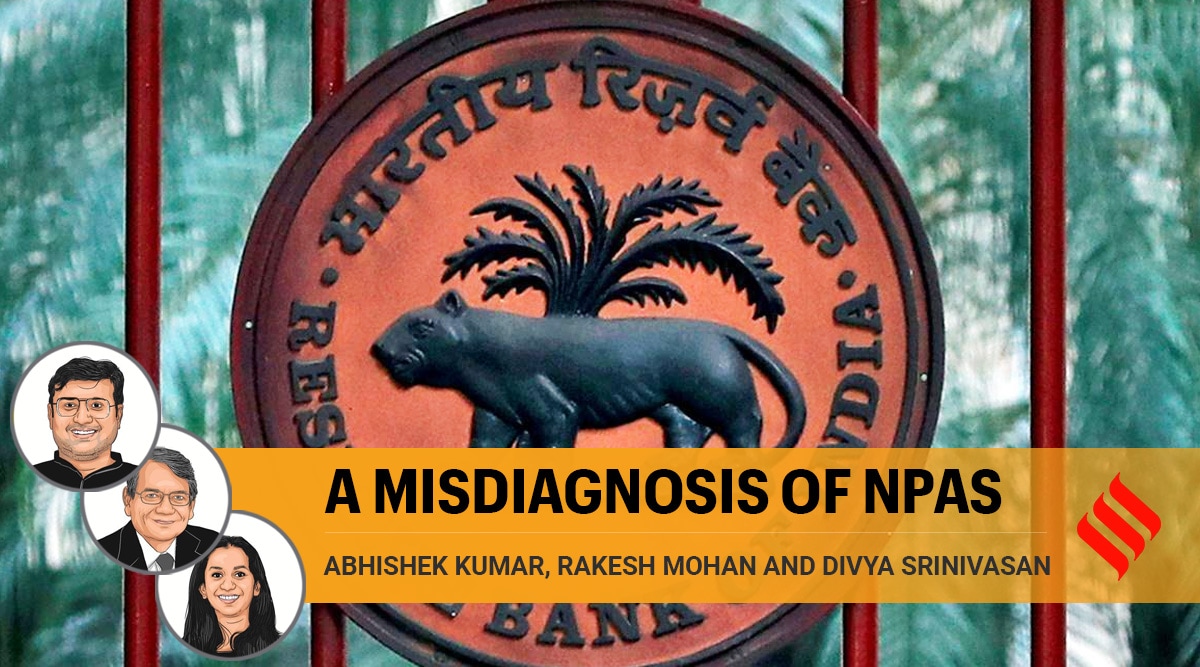 The rise in NPAs from 2011 onwards coincides with the fall in international commodity prices.
The rise in NPAs from 2011 onwards coincides with the fall in international commodity prices.The Indian banking system faced a significant challenge after 2011 with an increasing quantum of non-performing assets (NPAs). By the late 2000s, NPAs (as a percentage of gross advances) had decreased to less than 3.5 per cent. The downward trend, however, did not continue as NPAs began to rise in 2011 and peaked at 11.18 per cent in the fiscal year that ended in 2018. As expected, this rise occurred with the deterioration of the balance sheets of non-financial firms, and this twin balance sheet crisis contributed significantly to the deceleration of growth in the late 2010s.
It has been argued as a problem that the problem relates to public sector banks because they have a disproportionate share of NPAs. Poor management and governance issues in such banks stemming from government ownership have been cited as the major causes of the crisis. But government ownership does not explain the improvement in performance that public sector banks saw throughout the 2000s. It is improbable that governance improved suddenly and dwindled subsequently. Moreover, most of these NPAs arose due to defaults by private sector non-financial firms, making it even more difficult to accept the blame that’s been put on governance issues. Since this narrative is simple and easier to communicate, it has stymied systematic scientific research in the area.
Most importantly, the difference in the business models of public and private sector banks has not received due attention. At the beginning of the 2010s, public sector banks had significantly higher exposure (per cent of total loans) to commodity-sensitive sectors such as iron and steel and textiles compared to private sector banks. A careful examination of the data gives overwhelming evidence that a large fraction of the difference between NPAs in the public and private sector banks arose due to differences in their business models.
The rise in NPAs from 2011 onwards coincides with the fall in international commodity prices. The earlier episodes of decline in prices in the late 1990s and 2009 had strained the balance sheets of banks in India as well and these two earlier episodes of decline in prices were not as prolonged and severe as the one between 2011-16. It is because of the commodity price boom in the last two years that despite the worst kind of economic crisis due to Covid-19, we have hardly heard about any stress in the banking sector during the pandemic.
This close link between commodity prices and non-performing assets has stood the test of time and works via the worsening of profitability of non-financial firms which, in turn, makes them default on loans. A study of balance sheets of non-financial firms in India shows that the profitability of firms and international commodity prices are tightly linked. A decline in commodity prices leads to a decline in raw material costs but it also leads to a more than proportionate decline in sales revenue. And that, combined with fixed labour costs, crunches the margins of these firms and their loan repayment capacity.
For example, suppose a firm borrows Rs 5 lakh when the price of its main output was Rs 10 per unit. It will find it hard to pay back the loan if the price decreases to Rs 5 per unit and it is not able to sell a significantly higher quantity of output. A large number of borrowers in commodity-sensitive sectors faced this situation during 2011-16 when the non-energy commodity prices declined by about 35 per cent and metals prices declined by 45 per cent. In other words, large adverse movements in prices, compared to the projected prices in 2010 and before, on which business decisions were made caused higher corporate default. Hence, we find that banks exposed to commodities whose prices declined experienced a higher build-up in NPAs compared to banks not exposed to these sectors.
However, as banks lend to several sectors with heterogenous price movements, the estimation of the effect of movements in prices on NPAs becomes slightly difficult. To overcome this, we create a nominal price index using novel data on banks’ sectoral exposure (percentage of loans to a sector) and commodity prices. For each bank, we multiply the exposure with the sectoral price in that year and sum it over all the sectors to obtain the nominal price index. This nominal price index is distinct for each bank every year and captures the bank-wise heterogeneity in exposure to the commodity prices. This nominal price index can change due to changes in exposure to sectors or changes in prices associated with these sectors.
We estimate the impact of changes in commodity prices on NPAs by allowing the nominal price index to vary due to prices alone and find that banks which experienced a higher decline in prices also experience higher amounts of defaults and hence higher NPAs. Also, these models explain about 30 per cent of the increase in NPAs in the 2010s. As mentioned before, public sector banks generally had higher exposure to commodity-sensitive sectors, hence they experienced a relatively higher decline in prices and a bigger rise in non-performing assets after the price crash of the 2010s.
The ramifications of the aforementioned findings are critical. First, it helps us decipher the twin balance sheet crisis of the 2010s which affected growth adversely and has not been understood so far. Second, a large proportion of NPAs arose because of exogenous shocks, which have nothing to do with management and governance issues in public sector banks. We believe that our work will drive more systematic research in this area which will lead to a better understanding of the twin balance sheet crisis of the 2010s and inform our way forward for appropriate banking reforms.
Kumar is associate fellow, Mohan is president and Srinivasan is research analyst at Centre for Social and Economic Progress